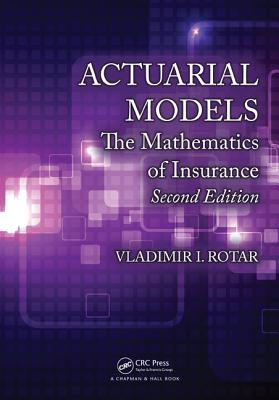Preparing students to take their actuarial exams, this text covers the basic models of insurance processes and presents the mathematical frameworks and methods used in actuarial modeling. It contains the standard material taught in actuarial modeling courses as well as several advanced topics. This second edition revises all chapters, especially material on the surplus process, and takes into account recent developments in teaching actuarial modeling. It includes a new chapter on pension models and new problems from Casualty Actuarial Society exams.
Actuarial Models: The Mathematics of Insurance, Second Edition thoroughly covers the basic models of insurance processes. It also presents the mathematical frameworks and methods used in actuarial modeling. This second edition provides an even smoother, more robust account of the main ideas and models, preparing students to take exams of the Society of Actuaries (SOA) and the Casualty Actuarial Society (CAS).
New to the Second Edition
- Revises all chapters, especially material on the surplus process
- Takes into account new results and current trends in teaching actuarial modeling
- Presents a new chapter on pension models
- Includes new problems from the 2011-2013 CAS examinations
Like its best-selling, widely adopted predecessor, this edition is designed for students, actuaries, mathematicians, and researchers interested in insurance processes and economic and social models. The author offers three clearly marked options for using the text. The first option includes the basic material for a one-semester undergraduate course, the second provides a more complete treatment ideal for a two-semester course or self-study, and the third covers more challenging topics suitable for graduate-level readers.
Get Actuarial Models by at the best price and quality guranteed only at Werezi Africa largest book ecommerce store. The book was published by Taylor & Francis Inc and it has pages. Enjoy Shopping Best Offers & Deals on books Online from Werezi - Receive at your doorstep - Fast Delivery - Secure mode of Payment
 Jacket, Women
Jacket, Women
 Woolend Jacket
Woolend Jacket
 Western denim
Western denim
 Mini Dresss
Mini Dresss
 Jacket, Women
Jacket, Women
 Woolend Jacket
Woolend Jacket
 Western denim
Western denim
 Mini Dresss
Mini Dresss
 Jacket, Women
Jacket, Women
 Woolend Jacket
Woolend Jacket
 Western denim
Western denim
 Mini Dresss
Mini Dresss
 Jacket, Women
Jacket, Women
 Woolend Jacket
Woolend Jacket
 Western denim
Western denim
 Mini Dresss
Mini Dresss
 Jacket, Women
Jacket, Women
 Woolend Jacket
Woolend Jacket
 Western denim
Western denim
 Mini Dresss
Mini Dresss






























































